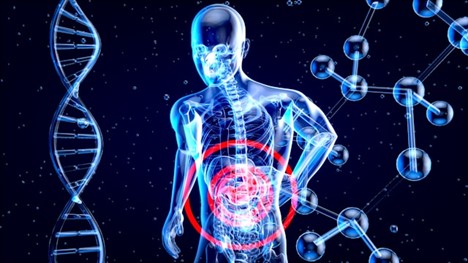
13 Nov Understanding Fatty Liver Disease: Causes, Risks, and Prevention
Fatty liver disease is an increasingly common condition, particularly in modern, health-conscious societies where lifestyle and diet often play a significant role in its development. While many people associate liver disease with heavy alcohol consumption, non-alcoholic fatty liver disease (NAFLD) is on the rise and can occur even in those who rarely drink. In fact, about 32% of the global population is estimated to have NAFLD, making it one of the most common liver disorders worldwide.
Let’s dive into what fatty liver disease is, who it impacts, what causes it, and, most importantly, how you can take steps to prevent it. For more information you can speak with your gastroenterologist.
What Is Fatty Liver Disease?
Fatty liver disease occurs when there’s an accumulation of fat in the liver. In a healthy liver, there’s little to no fat. But when more than 5-10% of the liver’s weight is fat, it can lead to inflammation, liver damage, and scarring (cirrhosis) in more severe cases.
There are two primary types of fatty liver disease:
- Alcoholic Fatty Liver Disease (AFLD): Caused by excessive alcohol consumption, which overwhelms the liver’s ability to metabolize alcohol.
- Non-Alcoholic Fatty Liver Disease (NAFLD): Occurs in individuals who drink little to no alcohol and is linked to factors like obesity, insulin resistance, and poor diet.
What Causes Fatty Liver Disease?
Several factors can contribute to the development of fatty liver disease, especially NAFLD. The main culprits include:
- Obesity: One of the leading risk factors, as excess fat in the body often results in fat being deposited in the liver.
- Type 2 Diabetes and Insulin Resistance: These conditions interfere with how the body uses and stores sugar and fat, leading to increased liver fat accumulation.
- Metabolic Syndrome: A cluster of conditions (including high blood pressure, high cholesterol, and excess abdominal fat) that raises the risk of NAFLD.
- Poor Diet: Diets high in sugar, refined carbohydrates, and unhealthy fats contribute to fat buildup in the liver.
- Sedentary Lifestyle: Lack of physical activity can lead to weight gain and insulin resistance, which increases the risk of fatty liver disease.
Who Does It Impact Most?
Fatty liver disease can affect anyone, but it tends to be more common in:
- Overweight and Obese Individuals: Especially those who carry excess weight in the abdomen.
- People with Type 2 Diabetes or Pre-diabetes: Both conditions are closely linked with NAFLD due to the body’s inability to regulate sugar and fat effectively.
- Individuals with Metabolic Syndrome: A combination of obesity, high blood pressure, and high blood sugar greatly increases the risk.
- Older Adults: Fatty liver disease is more prevalent in people over the age of 50, though it can develop at any age.
Interestingly, while it’s traditionally been viewed as a condition affecting middle-aged adults, NAFLD is increasingly seen in younger populations, including children and adolescents. With rising rates of childhood obesity, early detection and intervention are becoming more crucial.
Is Fatty Liver Disease Dangerous?
In its early stages, fatty liver disease may cause few, if any, symptoms. However, if left untreated, it can progress to non-alcoholic steatohepatitis (NASH)—a more severe form of liver inflammation that can lead to fibrosis (scarring) and cirrhosis. Cirrhosis can cause irreversible liver damage and increase the risk of liver failure and liver cancer.
The good news is that NAFLD is largely preventable and, in many cases, even reversible with lifestyle changes.
Prevention and Treatment
Here’s how you can prevent fatty liver disease and support liver health:
- Exercise Regularly: Physical activity helps reduce fat in the liver. Aim for at least 150 minutes of moderate-intensity exercise per week, such as brisk walking, cycling, or swimming.
- Maintain a Healthy Weight: Achieving and maintaining a healthy body weight is one of the most effective ways to prevent and treat fatty liver disease. Even a 10% reduction in body weight can significantly reduce fat in the liver and improve overall liver function.
- Eat a Balanced Diet: Focus on whole foods such as fruits, vegetables, whole grains, lean proteins, and healthy fats (like those found in nuts, seeds, and olive oil). Limit sugar, refined carbohydrates, and processed foods, which contribute to fat buildup in the liver.
- Limit Alcohol Consumption: Even though NAFLD is not caused by alcohol, excessive drinking can worsen liver damage.
- Control Blood Sugar Levels: If you have diabetes or pre-diabetes, work with your healthcare provider to manage your blood sugar levels through diet, exercise, and medication if needed.
Final Thoughts
Fatty liver disease is a silent but widespread health condition that can have serious consequences if left unchecked. By staying active, eating a nutritious diet, and maintaining a healthy weight, you can greatly reduce your risk of developing fatty liver disease. The liver is a resilient organ—taking steps to protect it today can lead to better health for years to come.
If you suspect you may be at risk for fatty liver disease, consult with your healthcare provider. Early detection and lifestyle changes can make all the difference in preventing its progression.



